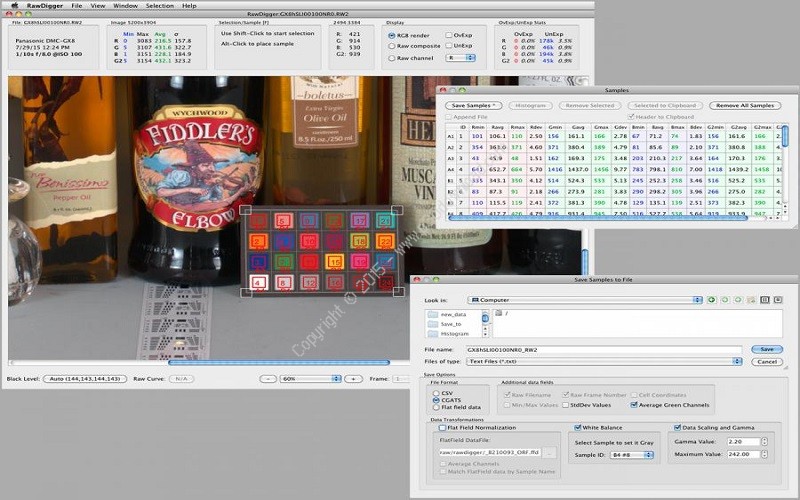

Results can be saved as appropriate in the form of bitmaps and/or CSV and CGATS tables. Currently the main tools RawDigger offers are histograms, statistical analysis of raw data (mean, StdDev, min and max values), raw compression tone curve dump (if present). RawDigger allows to view, study, and analyze raw data as recorded by digital photo- and certain video cameras. The library is also useful for raw data analysis and for the purpose of testing sensors and lenses. demosaicking, color transforms, noise reduction, correction for distortions and aberrations introduced by optics, etc. LibRaw library is meant to address the needs of raw convertor developers, GUI developers, and those interested in implementing and testing their own routines for certain steps of raw conversion workflow, i.e.
#Libraw rawdigger free#
We offer consulting services, and currently maintain several projects: free open-source multi-platform LibRaw API library based on dcraw FastRawViewer, a fast RAW images viewer and RawDigger, a program to view and analyze raw image data.
#Libraw rawdigger software#
To see the minute details, the scale is set to linear on X, log on Y, with bin = 1.LibRaw LLC was established in 2008 to provide software for digital photography and videography. The screenshot below is done from a shot with a7 Mk III, the recommended black level reads 512 in makernotes, but the subtraction is off in RawDigger. (incidentally, one can use this area to remove some types of banding.) With Canon, we don't go by the recommended level, we calculate it instead from the "optical black" area which, as it seems, Canon dedicated for that very purpose. It also changes with the sensor temperature, Canon tends to account for this, others not so much.
#Libraw rawdigger iso#
For example, black level changes at extremely high ISO settings, and using just the recommended values may result in greenish or purplish conversions. Of course one may enter the black level values manually via RawDigger preferences, but that is still crude.Ĭameras are not precise instruments, and the calibration is often very rudimental. It is my opinion that for any serious analysis one needs to use black frames and disable subtraction of the recommended black level. There is also a factor of any hard-wired non-uniformity control, including vignetting (tests are better done with the lenses the camera doesn't know and can't read the aperture setting) it is not a given that black level is uniform across the image serious cameras include "black level flat field" data (usually it needs interpolation as it is sparse), or separate black levels for top and bottom of the frame (in assumption that a gradient ca get one close enough) - Sony are not one of those cameramakers to include such data, or we haven't found it yet. the recommended level is not always maintained in practice the thing that is has an unfortunate naming of PostAEGain - it is the amount of digital scaling applied to raw data to calibrate the sensor response In reality there are some other things skew the distribution: The way the black level is formed may involve clipping of some data, and it is quite often that the black level includes an artificial pedestal. If RawDigger / LibRaw is set to auto black level, that is what is subtracted. That is the recommended black level for consumer-oriented converters to hold to. Tag 0x7310 in makernotes reflects the programmed black level.

Also, I just checked and Libraw's 4channels.exe uses subtraction by default, in case others use that for their raw file splitting like I do - you can turn off the subtraction via -B. Iliah gave me some additional details behind that, which I'll post below. I kind of expected some measure of imbalance since it's chopping off half the data but I didn't realize it be to this extent. I manually calculated the subtracted the biased data and arrived at the same result as Libraw, so operating as expected.


 0 kommentar(er)
0 kommentar(er)
